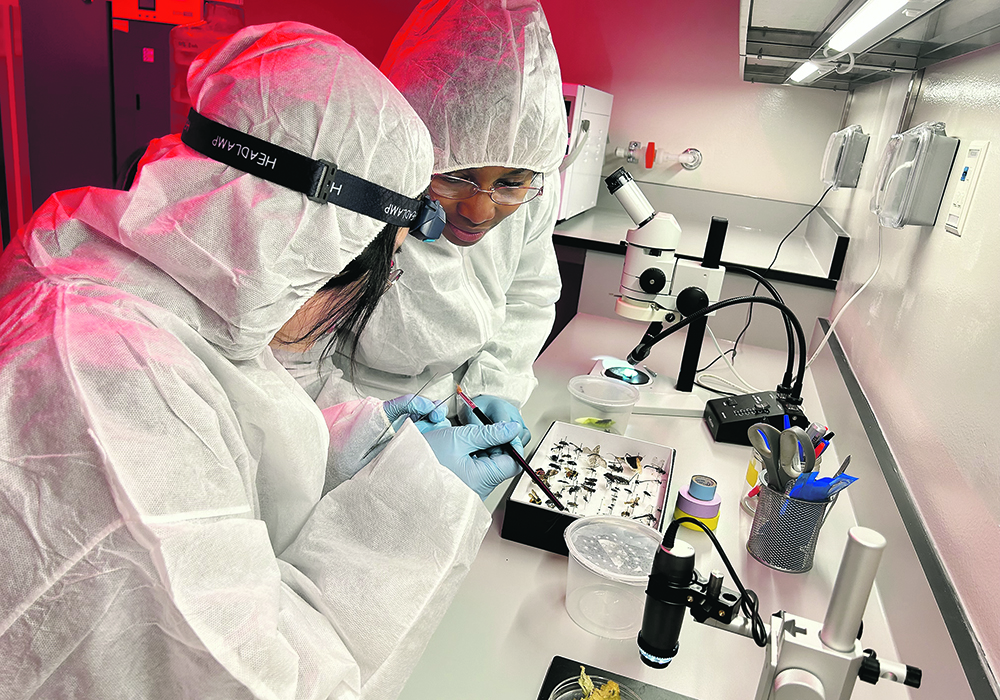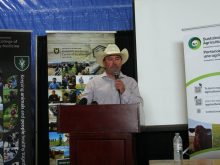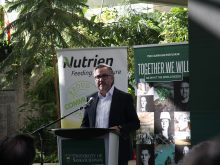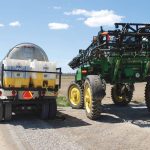Facility has quarantine capabilities that will allow it to meet the CFIA’s Plant Protection Containment Level-2A requirements
The first insect laboratory with quarantine capabilities at a western Canadian university is expected to allow scientists to safely conduct research that will protect farmers’ livelihoods and promote food security.
The new Insect Research Facility at the University of Saskatchewan is designed to contain, rear and maintain insects, plants and plant pathogens that pose a threat to agriculture or the environment, said associate professor Sean Prager.
The 500 sq. foot operation in the university’s Agriculture Building meets the Canadian Food Inspection Agency’s Plant Protection Containment Level-2A requirements. The standard is the second highest designation for plant pests, said Prager, who is the facility’s research lead.
Read Also

Extreme rain increases as planet warms
In this issue, we are going to wrap up our look at extreme rainfall by examining the different weather patterns that tend to be associated with these rainfall events.
Scientists will be able to safely evaluate the interaction of pests with crops under environmental conditions in Saskatchewan before they become a problem, he said.
“It allows you to keep things that you would like to do research on that would otherwise not be allowed or pose a threat to other researchers, or more likely the environment, if they escaped.”
Although there are similar facilities elsewhere in Canada, they are mostly run by the federal government as part of departments such as Agriculture Canada, said Prager.
The Insect Research Facility should allow scientists to investigate potential resistance traits among plant varieties to insects and pathogens, he said.
“It would allow us to work on (alternative) insecticides or (alternative) pest management techniques. It will allow us to do things like develop resistance assays (when) we’re concerned some insects might be developing resistance.”
Researchers will also be able to examine the life history of insects and related arthropods, said Prager. It will allow scientists to see if pests that are a threat elsewhere in the world can adapt to Western Canada’s climate, he said.
That includes pea aphids that could affect pulse crops.
“We’re very concerned with pea aphids and their associated viruses because those are a problem in the growing regions that are close to us, so when you cross the border to the (United States), they have a lot more problems and we’re not entirely sure why that is.”
Other aphid species are appearing in cereal crops in states such as Montana, said Prager. Meanwhile, spotted wing drosophila, which is a serious pest of soft fruit and berries, has been detected in Saskatchewan, he said.
The insect, which is native to Southeast Asia, is widespread in the fruit-growing regions of British Columbia after first being identified in that province in 2009.
Climate change is making it easier for foreign pests to survive in Western Canada, said Prager. Trends such as fewer cold weather events could allow more insects to survive over winter, while changing wind patterns could help them by altering their migration patterns, he said.
Insects can be difficult to study because of their small size and their diversity, said Prager. There are an estimated five million species around the world, with many requiring special environmental conditions that can be unique, he said.
“And so, they’re not always well understood in terms of how you would keep them, so some of them you cannot keep inside a facility. Some of them you can only study in the field, some nobody has ever tried to keep alive inside a laboratory, and so for all of those reasons, each new insect you work on is like a new challenge.”
Prager said it isn’t always clear why a particular pest is detected in nearby areas such as Montana, but not yet in Saskatchewan.
“So, in some cases, it’s just that we don’t have conditions that are suitable, and it’s purely that, and you’d expect that would change with climate change and things like that, and different farming practices. In some cases, it’s the varieties we grow. And in some cases, we have absolutely no idea.”
Funding included $500,000 from the Western Grains Research Foundation, along with $285,000 from the Canada Foundation for Innovation and $50,000 from the University of Saskatchewan. It also included $70,000 each from the Saskatchewan Canola Development Commission, Saskatchewan Pulse Growers and the Saskatchewan Wheat Development Commission.
















